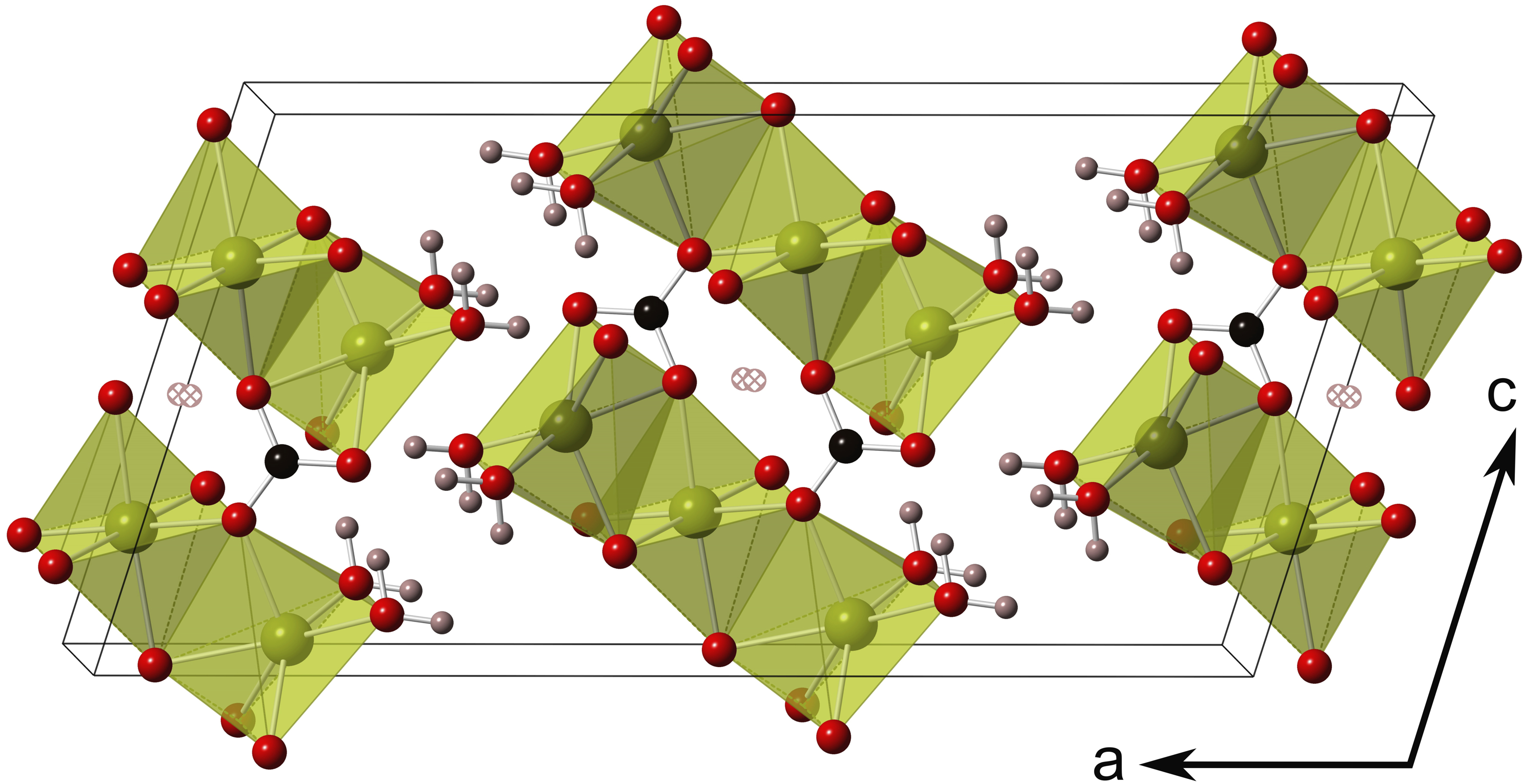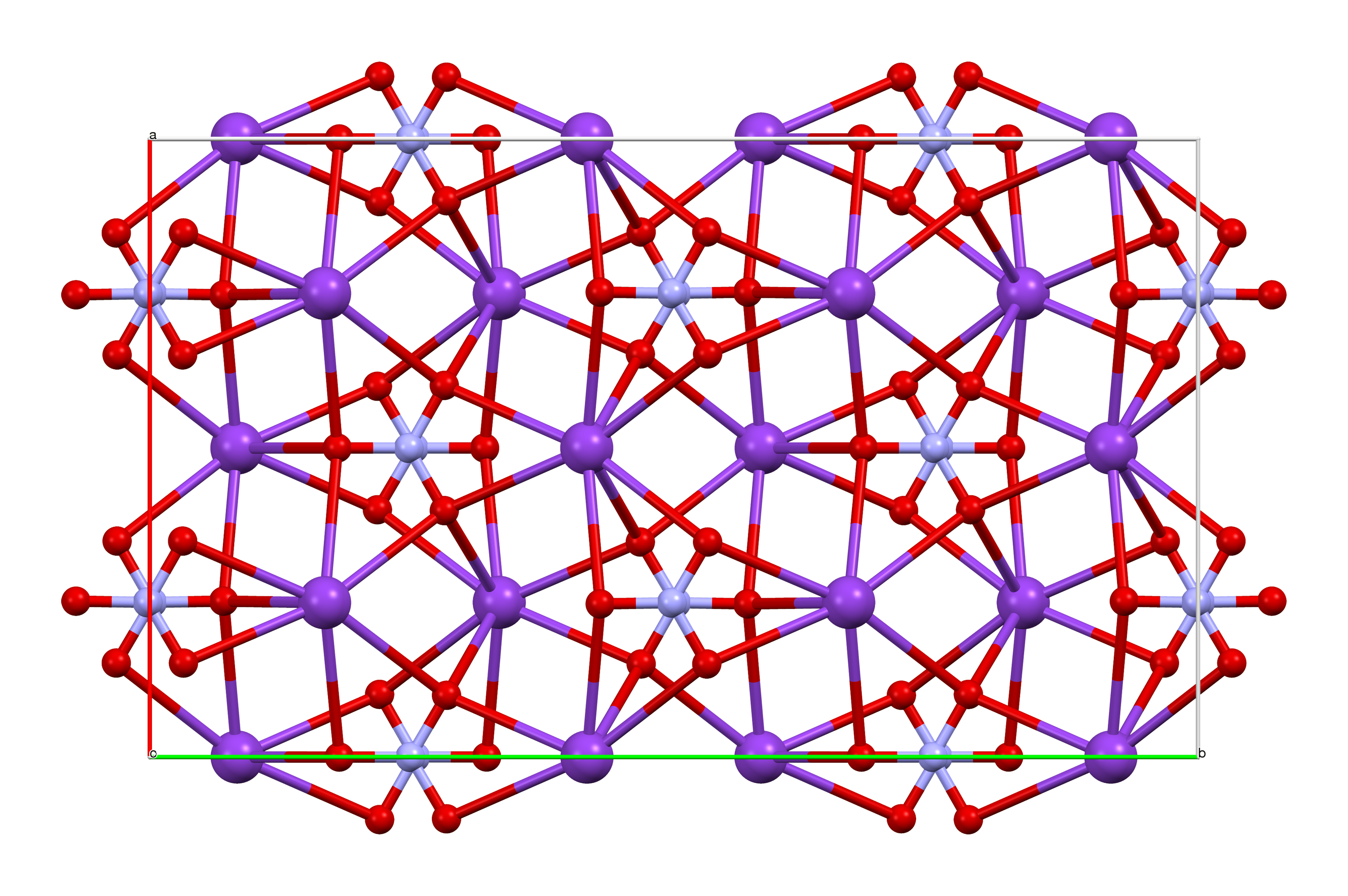|
Thermonatrite
Thermonatrite is a naturally occurring evaporite mineral form of sodium carbonate, Na2CO3·H2O. It was first described in 1845. Its name is from the Greek θερμός ''thermos'', "heat", plus ''natron'', because it may be a dehydration product of natron. Typical occurrence is in dry saline lake beds and as soil encrustations. It has been reported from volcano, volcanic fumaroles and in association with carbonatite-related Vein (geology), veins. Common associated minerals include trona, natron and halite. See also * Nahcolite * Natron * Niter * Potassium nitrate * Shortite * Soda (other) * Sodium sesquicarbonate * Trona References Carbonate minerals Orthorhombic minerals Minerals in space group 29 {{carbonate-mineral-stub ... [...More Info...] [...Related Items...] OR: [Wikipedia] [Google] [Baidu] |
Trona
Trona (trisodium hydrogendicarbonate dihydrate, also sodium sesquicarbonate dihydrate, Na2CO3·NaHCO3·2H2O) is a non- marine evaporite mineral. It is mined as the primary source of sodium carbonate in the United States, where it has replaced the Solvay process used in most of the rest of the world for sodium carbonate production. Turkey is also a major producer. Etymology The word entered English by way of either Swedish () or Spanish (), with both possible sources having the same meaning as in English: the mineral natron from North Africa. Both the Spanish and Swedish terms derive from the Arabic ''trōn'', which in turn derives from Arabic ''natron'' and Hebrew (''natruna''), which comes from ancient Greek (''nitron''), derived ultimately from ancient Egyptian ''ntry'' (or ''nitry'’). Natural deposits Trona is found at Owens Lake and Searles Lake, California; the Green River Formation of Wyoming and Utah; the Makgadikgadi Pans in Botswana and in the Nile Valley ... [...More Info...] [...Related Items...] OR: [Wikipedia] [Google] [Baidu] |
Carbonate Minerals
Carbonate minerals are those minerals containing the carbonate ion, . Carbonate divisions Anhydrous carbonates *Calcite group: trigonal **Calcite CaCO3 **Gaspéite (Ni,Mg,Fe2+)CO3 **Magnesite MgCO3 **Otavite CdCO3 **Rhodochrosite MnCO3 **Siderite FeCO3 **Smithsonite ZnCO3 **Spherocobaltite CoCO3 *Aragonite group: orthorhombic **Aragonite CaCO3 **Cerussite PbCO3 **Strontianite SrCO3 **Witherite BaCO3 **Rutherfordine UO2CO3 **Natrite Na2CO3 Anhydrous carbonates with compound formulas *Dolomite group: trigonal **Ankerite CaFe(CO3)2 **Dolomite (mineral), Dolomite CaMg(CO3)2 **Huntite Mg3Ca(CO3)4 **Minrecordite CaZn(CO3)2 **Barytocalcite BaCa(CO3)2 Carbonates with hydroxyl or halogen *Carbonate with hydroxide: monoclinic **Azurite Cu3(CO3)2(OH)2 **Hydrocerussite Pb3(CO3)2(OH)2 **Malachite Cu2CO3(OH)2 **Rosasite (Cu,Zn)2CO3(OH)2 **Phosgenite Pb2(CO3)Cl2 **Hydrozincite Zn5(CO3)2(OH)6 **Aurichalcite (Zn,Cu)5(CO3)2(OH)6 Hydrated carbonates *Hydromagnesite Mg5(CO3)4(OH)2.4H2O *Ikaite ... [...More Info...] [...Related Items...] OR: [Wikipedia] [Google] [Baidu] |
Trona
Trona (trisodium hydrogendicarbonate dihydrate, also sodium sesquicarbonate dihydrate, Na2CO3·NaHCO3·2H2O) is a non- marine evaporite mineral. It is mined as the primary source of sodium carbonate in the United States, where it has replaced the Solvay process used in most of the rest of the world for sodium carbonate production. Turkey is also a major producer. Etymology The word entered English by way of either Swedish () or Spanish (), with both possible sources having the same meaning as in English: the mineral natron from North Africa. Both the Spanish and Swedish terms derive from the Arabic ''trōn'', which in turn derives from Arabic ''natron'' and Hebrew (''natruna''), which comes from ancient Greek (''nitron''), derived ultimately from ancient Egyptian ''ntry'' (or ''nitry'’). Natural deposits Trona is found at Owens Lake and Searles Lake, California; the Green River Formation of Wyoming and Utah; the Makgadikgadi Pans in Botswana and in the Nile Valley ... [...More Info...] [...Related Items...] OR: [Wikipedia] [Google] [Baidu] |
Shortite
Shortite is a sodium-calcium carbonate mineral, with the chemical formula Na2Ca2(CO3)3. It was discovered by J. J. Fahey in well cuttings from the Green River Formation, Sweetwater County, Wyoming, US, and was named to honor Maxwell N. Short (1889–1952), Professor of Mineralogy, University of Arizona. Shortite is associated with commercial trona ores, and some care must be taken when beneficiating crude trona to avoid contamination with shortite.McKetta, John J. (1995) "Slurry Systems, Instrumentation to Solid–Liquid Separation", ''Encyclopedia of Chemical Processing and Design'', See also * Aragonite * Calcite * Nahcolite * Natron * Sodium sesquicarbonate * Thermonatrite * Trona * Vaterite Vaterite is a mineral, a polymorphism (materials science), polymorph of calcium carbonate (calcium, Cacarbon, Coxygen, O3). It was named after the German mineralogist Heinrich Vater. It is also known as mu-calcium carbonate (μ-CaCO3). Vaterite b ... References Mindata, with lo ... [...More Info...] [...Related Items...] OR: [Wikipedia] [Google] [Baidu] |
Natron
Natron is a naturally occurring mixture of sodium carbonate decahydrate ( Na2CO3·10H2O, a kind of soda ash) and around 17% sodium bicarbonate (also called baking soda, NaHCO3) along with small quantities of sodium chloride and sodium sulfate. Natron is white to colourless when pure, varying to gray or yellow with impurities. Natron deposits are sometimes found in saline lake beds which arose in arid environments. Throughout history natron has had many practical applications that continue today in the wide range of modern uses of its constituent mineral components. In modern mineralogy the term ''natron'' has come to mean only the sodium carbonate decahydrate (hydrated soda ash) that makes up most of the historical salt. Etymology The English and German word ''natron'' is a French cognate derived through the Spanish ''natrón'' from Latin ''natrium'' and Greek ''nitron'' (). This derives from the Ancient Egyptian word ''nṯrj''. ''Natron'' refers to Wadi El Natrun or ... [...More Info...] [...Related Items...] OR: [Wikipedia] [Google] [Baidu] |
Carbonate Mineral
Carbonate minerals are those minerals containing the carbonate ion, . Carbonate divisions Anhydrous carbonates *Calcite group: trigonal **Calcite CaCO3 **Gaspéite (Ni,Mg,Fe2+)CO3 **Magnesite MgCO3 **Otavite CdCO3 **Rhodochrosite MnCO3 **Siderite FeCO3 **Smithsonite ZnCO3 **Spherocobaltite CoCO3 *Aragonite group: orthorhombic **Aragonite CaCO3 **Cerussite PbCO3 **Strontianite SrCO3 **Witherite BaCO3 **Rutherfordine UO2CO3 **Natrite Na2CO3 Anhydrous carbonates with compound formulas *Dolomite group: trigonal **Ankerite CaFe(CO3)2 **Dolomite (mineral), Dolomite CaMg(CO3)2 **Huntite Mg3Ca(CO3)4 **Minrecordite CaZn(CO3)2 **Barytocalcite BaCa(CO3)2 Carbonates with hydroxyl or halogen *Carbonate with hydroxide: monoclinic **Azurite Cu3(CO3)2(OH)2 **Hydrocerussite Pb3(CO3)2(OH)2 **Malachite Cu2CO3(OH)2 **Rosasite (Cu,Zn)2CO3(OH)2 **Phosgenite Pb2(CO3)Cl2 **Hydrozincite Zn5(CO3)2(OH)6 **Aurichalcite (Zn,Cu)5(CO3)2(OH)6 Hydrated carbonates *Hydromagnesite Mg5(CO3)4(OH)2.4H2O *Ikaite ... [...More Info...] [...Related Items...] OR: [Wikipedia] [Google] [Baidu] |
Villiaumite
Villiaumite is a rare halide mineral composed of sodium fluoride, Na F. It is very soluble in water and some specimens fluoresce under long and short wave ultraviolet light. It has a Mohs hardness of 2.5 and is usually red, pink, or orange in color. It is toxic to humans. The red color is due to a broad absorption peaking at 512 nm. It is a result of radiation damage to the crystal. Occurrence It occurs in nepheline syenite intrusives and in nepheline syenite pegmatites. It occurs associated with aegirine, sodalite, nepheline, neptunite, lamprophyllite, pectolite, serandite, eudialyte, ussingite, chkalovite and zeolites. It has been reported from Minas Gerais, Brazil; Mont Saint-Hilaire, Quebec, Canada; the Ilimaussaq complex of Greenland; Lake Magadi, Kenya; Windhoek District, Namibia; the Fen Complex, Telemark, Norway; the Khibiny and Lovozero Massifs, Kola Peninsula, Russia; Porphyry Mountain, Boulder County, Colorado and Point of Rocks Mesa, Colfax County, New M ... [...More Info...] [...Related Items...] OR: [Wikipedia] [Google] [Baidu] |
Sodium Sesquicarbonate
Sodium sesquicarbonate (systematic name: trisodium hydrogendicarbonate) Na3H(CO3)2 is a double salt of sodium bicarbonate and sodium carbonate (NaHCO3 · Na2CO3), and has a needle-like crystal structure. However, the term is also applied to an equimolar mixture of those two salts, with whatever water of hydration the sodium carbonate includes, supplied as a powder. The dihydrate, Na3H(CO3)2 · 2H2O, occurs in nature as the evaporite mineral trona. Due to concerns about the toxicity of borax which was withdrawn as a cleaning and laundry product, sodium sesquicarbonate is sold in the European Union (EU) as "Borax substitute". It is also known as one of the E number food additives E500(iii). Uses Sodium sesquicarbonate is used in bath salts, swimming pools, as an alkalinity source for water treatment, and as a phosphate-free product replacing the trisodium phosphate for heavy duty cleaning. Sodium sesquicarbonate is used in the conservation of copper and copper alloy artifa ... [...More Info...] [...Related Items...] OR: [Wikipedia] [Google] [Baidu] |
Soda (other)
Soda or SODA may refer to: *Soft drink, a sweetened, carbonated, and usually flavored drink Chemistry * Some chemical compounds containing sodium ** Sodium carbonate, washing soda or soda ash ** Sodium bicarbonate, baking soda ** Sodium hydroxide, caustic soda ** Sodium oxide, an alkali metal oxide * Soda glass, a common glass made with sodium carbonate or sodium oxide * Soda lake, an alternate generic name for a salt lake, with high concentration of sodium carbonates * Soda lime, a mixture of sodium, calcium, and potassium hydroxides * Soda pulping, a process for paper production using sodium compounds Computing * SODA (operating system) * Service-oriented development of applications * Service-oriented device architecture, to enable devices to be connected to a service-oriented architecture * Soda PDF, a family of applications used on .pdf files * Symposium on Discrete Algorithms, an annual academic conference in computer science Entertainment * '' Czech Soda'' (Česká ... [...More Info...] [...Related Items...] OR: [Wikipedia] [Google] [Baidu] |
Potassium Nitrate
Potassium nitrate is a chemical compound with a sharp, salty, bitter taste and the chemical formula . It is a potassium salt of nitric acid. This salt consists of potassium cations and nitrate anions , and is therefore an alkali metal nitrate. It occurs in nature as a mineral, niter (or ''nitre'' outside the United States). It is a source of nitrogen, and nitrogen was named after niter. Potassium nitrate is one of several nitrogen-containing compounds collectively referred to as saltpetre (or saltpeter in the United States). Major uses of potassium nitrate are in fertilizers, tree stump removal, rocket propellants and fireworks. It is one of the major constituents of traditional gunpowder (black powder). In processed meats, potassium nitrate reacts with hemoglobin and myoglobin generating a red color. Etymology Nitre, or potassium nitrate, because of its early and global use and production, has many names. As for nitrate, Egyptian and Hebrew words for it had the ... [...More Info...] [...Related Items...] OR: [Wikipedia] [Google] [Baidu] |
Niter
Niter or nitre is the mineral form of potassium nitrate, KNO3. It is a soft, white, highly soluble mineral found primarily in arid climates or cave deposits. Potassium and other nitrates are of great importance for use in fertilizers and, historically, gunpowder. Much of the world's demand is now met by synthetically produced nitrates, though the natural mineral is still mined and is still of significant commercial value. Historically, the term ''niter'' was not well differentiated from natron, both of which have been very vaguely defined but generally refer to compounds of sodium or potassium joined with carbonate or nitrate ions. Characteristics Niter is a colorless to white mineral crystallizing in the orthorhombic crystal system. It is the mineral form of potassium nitrate, , and is soft (Mohs hardness 2), highly soluble in water, and easily fusible. Its crystal structure resembles that of aragonite, with potassium replacing calcium and nitrate replacing carbonate. ... [...More Info...] [...Related Items...] OR: [Wikipedia] [Google] [Baidu] |




